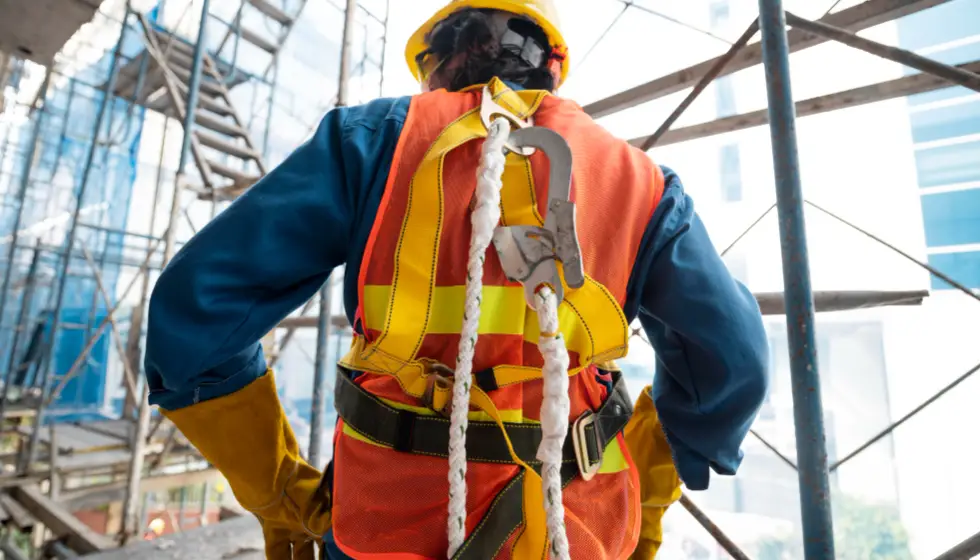Why Fall Protection Training Matters
Gravity doesn’t care if you’re fixing a roof or installing scaffolding—if you slip, you’re going down. In Canada, falls are among the leading causes of workplace injuries, and according to the Ontario Ministry of Labour, Training and Skills Development, over 10% of lost-time injuries are due to falls from heights.
Fall protection training isn’t just a checkbox on your certification list—it’s about keeping your bones intact and your head clear. The right training ensures you know how to inspect your gear, identify hazards, and safely anchor yourself to avoid accidents.
Understanding Fall Protection Ontario Regulations
Each province has its own set of rules, and fall protection Ontario regulations are no different. Here’s a quick rundown:
- Working at Heights (WAH) Training: Mandatory for workers who work at heights on construction projects where fall hazards exceed three meters. The training is good for three years before you need a refresher.
- Fall Protection Equipment: Must meet Ontario’s equipment standards, meaning harnesses, lanyards, and other gear should be in good shape and inspected regularly.
- Rescue Plan: Every worksite needs a plan in place to quickly and safely rescue anyone who might fall.
- Guardrails and Safety Nets: Where feasible, these should be used to minimize the need for personal protective equipment.
- Site-Specific Plans: A written fall protection plan is required for high-risk projects. It should be specific to the site and reviewed by all workers.
Fall Protection Safety Tips to Live By
Here’s a list of no-nonsense fall protection safety tips:
- Inspect Your Gear: Always check your harness, lanyards, and anchors before using them. Don’t play MacGyver with your equipment—if it’s frayed or cracked, toss it.
- Anchor Properly: Ensure your anchor point can handle the weight of a falling worker (typically at least 5,000 pounds). Connect to overhead anchors, and avoid anchoring at foot level unless necessary.
- Mind Your Lanyard Length: Too much slack and you’re practically base jumping if you fall. Keep it short and sweet.
- Stay Organized: Tools scattered on the ground are one thing, but at heights, they’re a trip hazard. Secure your gear properly.
- Buddy System: Make sure someone always has your back. Having a partner on standby can save precious time in emergencies.
What to Expect from Your Fall Protection Guide
Before your fall protection training begins, familiarize yourself with the essential components of a good fall protection guide. Here’s a sneak peek at what you’ll learn:
- Hazard Assessment: Identifying potential hazards at different job sites.
- Equipment Overview: An introduction to various safety harnesses, lanyards, anchor points, and their correct usage.
- Safe Work Practices: Learning proper techniques for moving around work zones at heights.
- Emergency Procedures: How to respond if someone falls or becomes suspended.
- Regulations Rundown: Understanding local regulations and how to comply with them.
The guide will also give you a heads-up about the written and practical exams required to pass your training.
Upgrading Your Skills: Online and In-Person Training
Different industries have different fall protection needs. If you’re upgrading from working on residential roofs to skyscrapers or from light maintenance to full-scale construction projects, you might need to enhance your skills with additional training.
Online Courses: Get the basics down at your own pace through interactive courses that cover regulations and best practices.
In-Person Training: For hands-on learners, in-person classes let you practice gear inspections, harness donning, and proper anchoring with the guidance of a qualified instructor.
Refresher Courses: Fall protection Ontario regulations require you to keep your knowledge fresh, so make sure you’re up to date on the latest safety protocols.
Final Thoughts
Now that you’ve got the basics covered, you’re ready to take that Fall Protection Training head-on. Follow the fall protection safety tips, make sure you’re compliant with Ontario regulations, and keep your fall protection guide handy for quick reference. For all your training needs, Valley WorkSafe has your back with our Online Workplace Safety and Training Certification Courses.
BONUS: If you’re lucky enough to be in the Ottawa Valley area (or Renfrew County Ontario, Canada) you can swing by for one of our in-person Working At Heights Trainings taught by widely acclaimed instructor, David Prange. Click here to read some of the great reviews, and learn more about how Valley WorkSafe can help prepare you for success, and every level!
Related Video:



